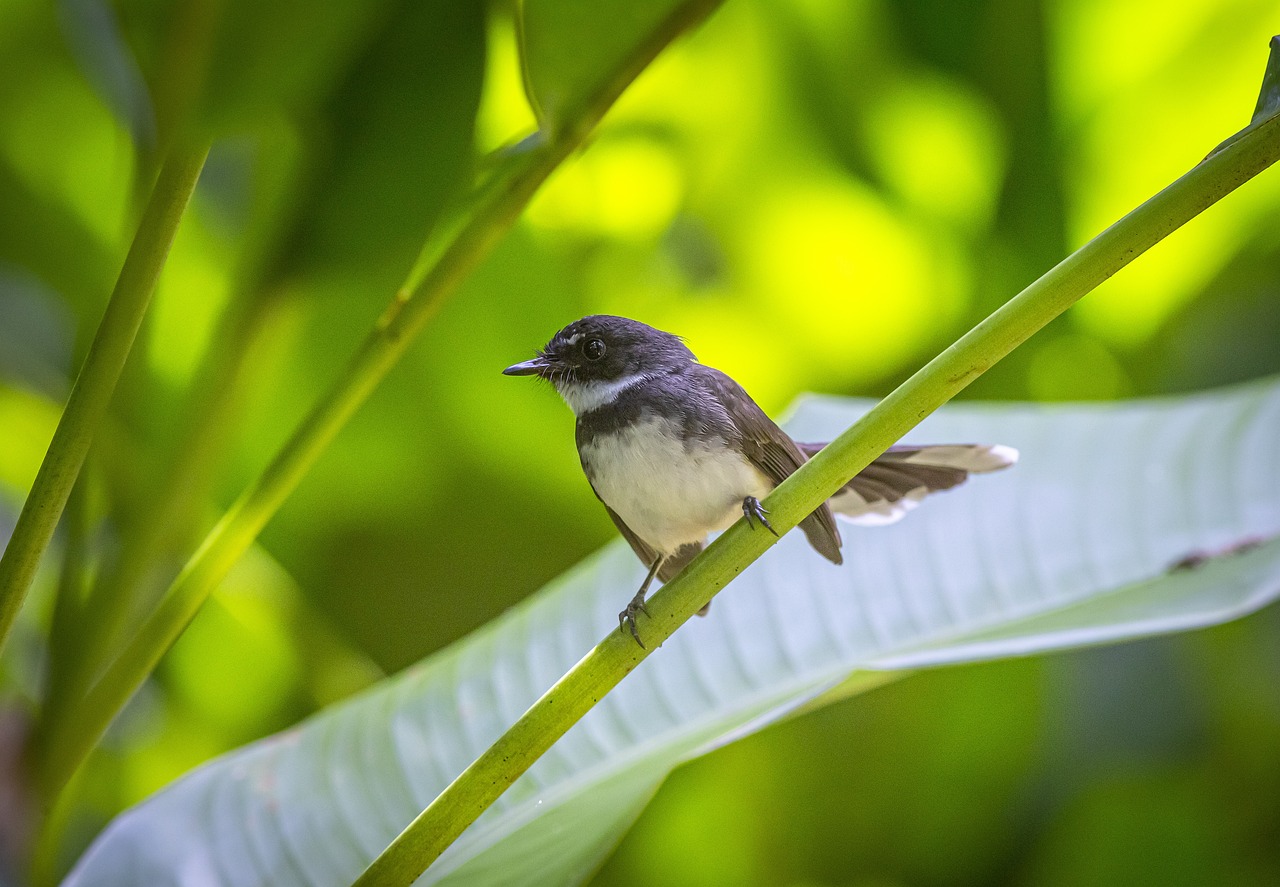The Oriental Magpie-Robin (Copsychus saularis) is a small passerine bird native to South and Southeast Asia. Known for its striking black-and-white plumage and melodious song, this bird is popular in gardens, parks, and urban areas, often seen perched on low branches or hopping on the ground in search of insects.
Key Characteristics:
- Appearance:
- Size: Medium-sized songbird, about 19-23 cm (7.5-9 inches) in length, including its tail.
- Color:
- Males: Glossy black with a white belly and a prominent white wing patch. Their long, black tail feathers are edged with white.
- Females: Duller than males, with greyish-black upperparts and white or greyish underparts.
- Bill and Legs: Black and slender, adapted for catching insects.
- Habitat:
- Oriental magpie-robins are highly adaptable and are found in a variety of habitats, including forests, gardens, plantations, and urban areas. They prefer open woodlands and areas with plenty of shrubs and low trees, providing ample cover and foraging opportunities.
- They are commonly seen in human settlements, where they often make their nests in hollowed trees, cavities, or man-made structures.
- Behavior:
- Feeding: Insectivorous by nature, Oriental magpie-robins primarily feed on insects like beetles, grasshoppers, and caterpillars. They are also known to consume fruits and nectar. These birds forage actively on the ground, hopping or flitting between branches, often flicking their tails up and down.
- Song: Renowned for their melodious and varied songs, which are typically delivered from a prominent perch. Males sing to attract mates and defend their territory, especially during the breeding season. Their repertoire includes whistles, trills, and mimicry of other birds.
- Social Behavior: Generally solitary or seen in pairs. They are territorial and may aggressively defend their feeding and nesting sites from other birds.
- Breeding:
- Breeding season varies by region but generally occurs from March to July. During this period, males become more vocal and display aggressive behavior to protect their territory.
- Nests are built in natural tree hollows, holes in walls, or under roofs. The female lays 3-5 eggs, which are incubated for about two weeks. Both parents participate in feeding the young, who fledge in about 10-13 days after hatching.
- Conservation Status:
- The Oriental magpie-robin is currently listed as “Least Concern” by the IUCN Red List due to its large and stable population across its range. However, habitat loss, trapping for the pet trade, and predation by domestic cats pose localized threats.
Ecological Role:
Oriental magpie-robins play a significant role in controlling insect populations, acting as natural pest controllers in gardens and agricultural areas. Their presence also contributes to the ecological balance by providing prey for larger predators and enhancing biodiversity.
Cultural Significance:
In many parts of Asia, the Oriental magpie-robin is celebrated for its beautiful song and is considered a symbol of good luck and prosperity. It is the national bird of Bangladesh, reflecting its cultural and ecological importance in the region.
Interesting Facts:
- These birds are known for their intelligence and adaptability. They often learn to exploit human resources, such as feeding on food scraps or nesting in man-made structures.
- In some cultures, the song of the magpie-robin is thought to bring good fortune, and they are often encouraged to nest near homes.
Conclusion:
The Oriental magpie-robin, with its striking appearance and rich, varied songs, is a cherished bird throughout its range. As both a symbol of nature’s beauty and a valuable participant in the local ecosystem, it continues to thrive alongside human populations.
Views: 1826
Subscribe to the newsletter:
